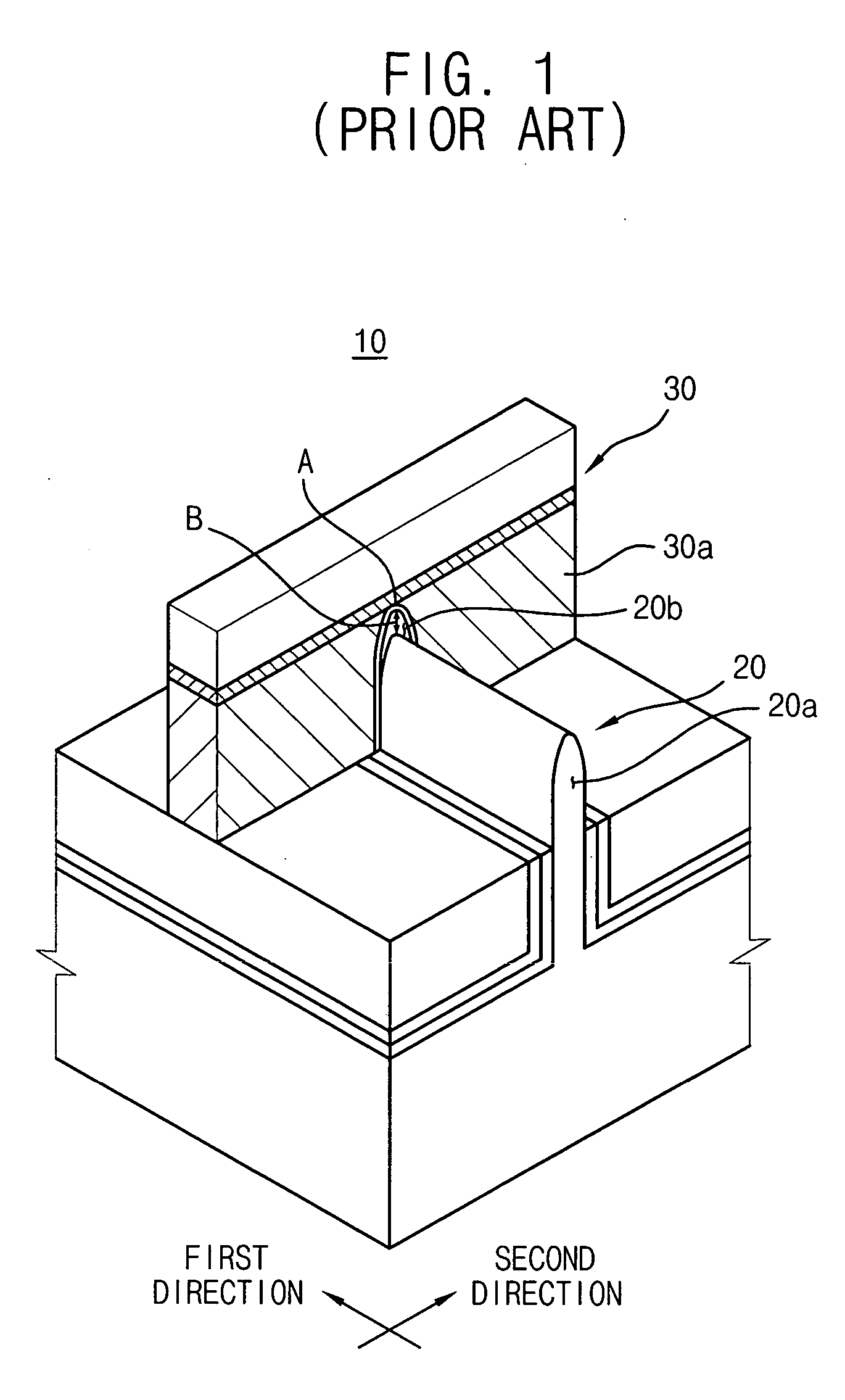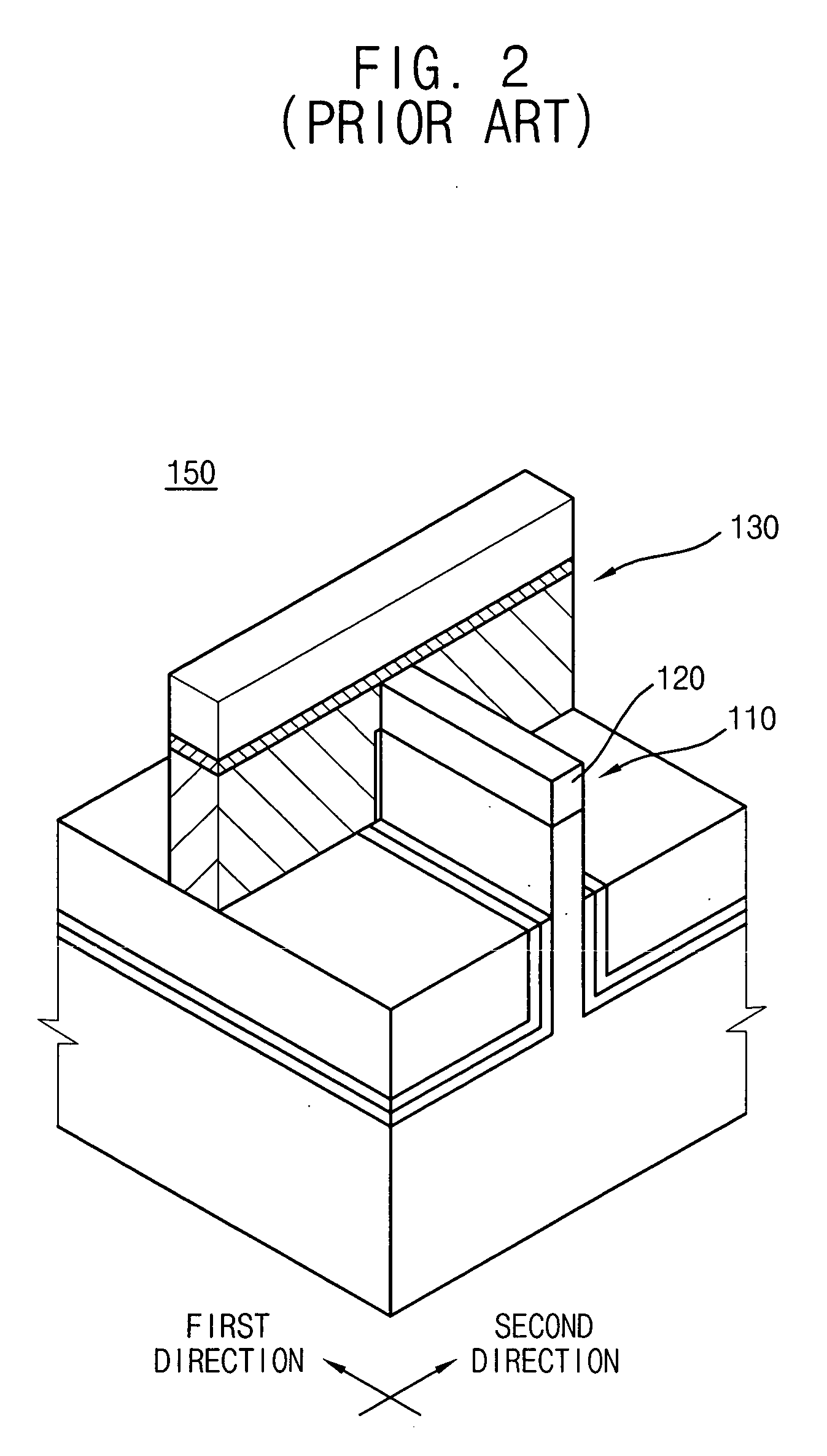Fin field effect transistor and method of manufacturing the same
a technology of fin fet and effect transistor, which is applied in the direction electrical apparatus, and semiconductor devices, can solve the problems of reducing the size of cmos devices to very small levels, affecting the operation of conventional cmos devices, and affecting the operation of basic electric elements, so as to achieve sufficient concentration of vertical gate fields and improve electrical characteristics of fin fet
- Summary
- Abstract
- Description
- Claims
- Application Information
AI Technical Summary
Benefits of technology
Problems solved by technology
Method used
Image
Examples
first embodiment
[0073]FIG. 7 is a perspective view illustrating a fin FET according to the present invention.
[0074] Referring to FIG. 7, the fin FET 300 of the first embodiment of the present invention includes a substrate 200a such as a silicon wafer, an active pattern 210, a first silicon nitride pattern 204a, a second oxide pattern 212a, a buffer pattern 214a, a second silicon nitride pattern 216a and a device isolation layer 218a. The fin FET 300 may further include a first oxide pattern 202a formed between the active pattern 210 and the first silicon nitride pattern 204a. When the first oxide pattern 202a is formed to a thickness below about 10 Å, a process for forming the first oxide pattern 202a is difficult to perform due to a small thickness thereof. When the first oxide pattern 202a is formed to a thickness over about 100 Å, notches on sidewalls of the first oxide pattern are so large that operation failures due to the notch are frequently generated. Accordingly, the first oxide pattern 2...
second embodiment
[0099] Referring to FIG. 19, the fin FET 400 of the present invention includes a substrate 200a such as a silicon wafer doped with P type impurities (hereinafter, referred to as P type substrate), an active pattern 210, a first silicon nitride pattern 204a, a second oxide pattern 212a, a buffer pattern 214a, a second silicon nitride pattern 216a and a device isolation layer 218a, a gate electrode 220 and a source / drain region 230 doped with N type impurities. The fin FET 400 may further include a first oxide pattern 202a formed between the active pattern 210 and the first silicon nitride pattern 204a.
[0100] The active pattern 210, which is known as a fin, protrudes from P type substrate 200a and extends in a first direction along the P type substrate 200a. The active pattern 210 includes a first portion 210a, which is not covered with the second oxide pattern 212a to be thereby exposed to surroundings and a second portion 210b that is covered with the second oxide pattern 212a. The...
PUM
 Login to View More
Login to View More Abstract
Description
Claims
Application Information
 Login to View More
Login to View More - R&D
- Intellectual Property
- Life Sciences
- Materials
- Tech Scout
- Unparalleled Data Quality
- Higher Quality Content
- 60% Fewer Hallucinations
Browse by: Latest US Patents, China's latest patents, Technical Efficacy Thesaurus, Application Domain, Technology Topic, Popular Technical Reports.
© 2025 PatSnap. All rights reserved.Legal|Privacy policy|Modern Slavery Act Transparency Statement|Sitemap|About US| Contact US: help@patsnap.com



